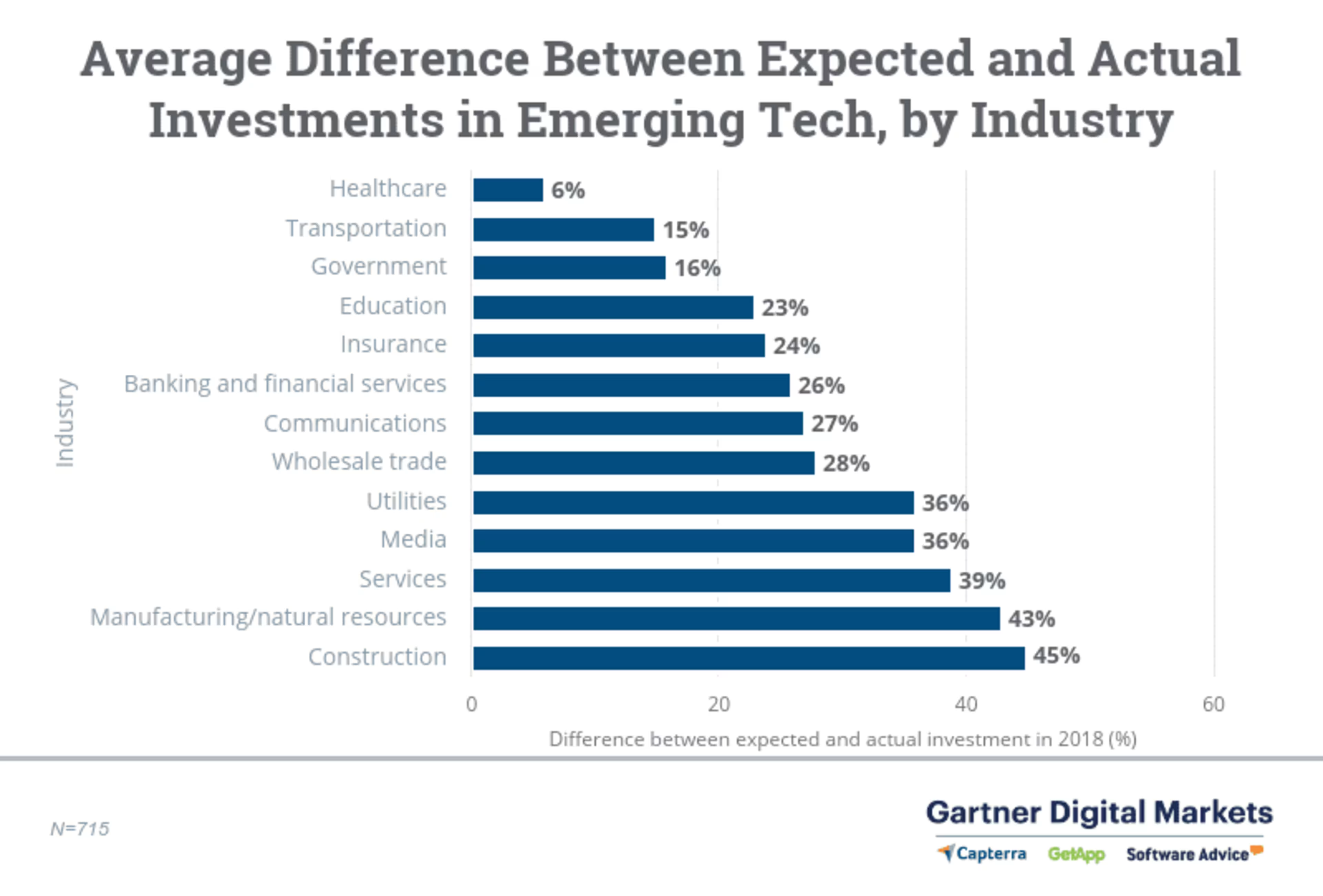Unsure of where to sell your emerging tech? Find the best industries to target with your marketing efforts.

Marketing emerging software and tech is a lot like asking someone to prom.
They can say "yes," they can say "no," or they can say "yes" but then never show, leaving you with a pink corsage, a black-on-black tux, and Chumbawamba's "Tubthumping" blasting mutedly from the limo you rented.
So how do you know if your leads are committed or if they're only considering your product? It could mean the difference between making a sale and wasting precious resources—and it's that much harder in the emerging tech field, in which you don't always know who your target customers are or what the adoption rate for your tech might be.
Certain industries are typically more receptive to emerging technologies, which makes them more ideal candidates for your targeted marketing.
So let's take a look at what those industries are.
What we mean when we talk about adoption
In 2017 and 2018, Gartner Digital Markets surveyed small and midsize businesses on their current and intended software and tech investments.
Over the course of analyzing this data, we looked at the following emerging technology categories:
Artificial intelligence and machine learning
Internet of things
Virtual/augmented reality
Drones
Conversational UI
Wearables
3D printing and additive manufacturing
Though this is not a complete list of emerging software and tech types, the variety and scope permitted us to note trends across the respondents.
What we found was that many different industries claim to be interested in certain emerging technologies, but their actual investments almost always fail to match their expected investments.
We then took the average of all discrepancies between expected and actual investments, by each industry, to come up with the below graph.

Where to target your marketing based on this research
What this means is that, of all industries investigated in our 2017 and 2018 survey, the best to target for emerging tech is healthcare.
There was only a 6% deficit between expected and actual investments for healthcare, 15% for transportation, and 16% for government-affiliated companies.
By targeting those industries, you're drastically increasing the likelihood that you can catch quality leads with a higher rate of conversion.
On the other hand, if you were to target a company in the construction business with your conversational UI software, you might be wasting your resources, as that sector has a 55% deficit.
Where to target your customer retention efforts based on this research
In fact, the construction industry, like many of the industries with the highest deficits on the graph, has lost a large number of emerging tech investors.
For conversational UI, 39% of construction companies were using the software in 2017, with an additional 42% planning to invest by the end of 2018. However, our 2018 survey showed that only 26% of construction companies were using conversational UI.
That's a 13% loss of investment across the construction industry, which would be a huge blow to your business no matter the size.
If you have customers who are in construction, manufacturing/natural resources, or the service industry, you should focus on customer retention as customers in those sectors drop tech at a much higher rate, regardless of the quality of your product.
A few caveats
One thing that's important to remember about this research is that it represents trends.
There are some software types for which the healthcare industry is less likely to be the ideal target market. For example, a transportation-focused business is much more likely (2% surplus) than healthcare (10% deficit) to invest in IoT software.
It's good to do your own additional research. If you work in conversational UI, don't shoot for transportation (32% deficit) but maybe look to communications (14% deficit), an industry that would logically be able to do more with the tech you offer.
3 key takeaways for targeting your emerging tech marketing campaign
The world of emerging tech is filled with innovation. You have the opportunity to shape the future of business, in small and big ways. But to be able to afford to do that, you need to focus on places where your business can really make an impact.
Follow these three guidelines and you'll be in a much better position to make a real impact:
Focus on marketing to the healthcare, transportation, and government industries
Focus your customer retention efforts on the construction, manufacturing/natural resources, and services industries.
Don't follow these rules blindly; do your own research into your specific software type.